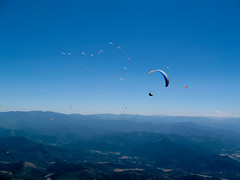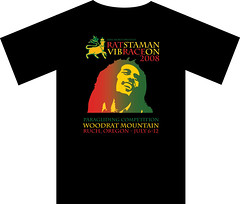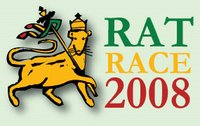 The 2008 Rat Race has been over for almost a week now, but I'm already missing it and thinking ahead to next year. This was my third Rat Race in as many years, and I'm starting to think I might be suffering from a serious addiction. It seems strange to be addicted to failure, because I never do well there - but man, is it fun trying. Maybe one day I'll figure it all out, and graduate to real comps, but in the meantime I am happy to succumb to my annual craving for mentored low-key competition.
The 2008 Rat Race has been over for almost a week now, but I'm already missing it and thinking ahead to next year. This was my third Rat Race in as many years, and I'm starting to think I might be suffering from a serious addiction. It seems strange to be addicted to failure, because I never do well there - but man, is it fun trying. Maybe one day I'll figure it all out, and graduate to real comps, but in the meantime I am happy to succumb to my annual craving for mentored low-key competition.This year's event was scheduled later than in previous years, to space it out from other events held at the site. But unfortunately July delivered the high pressure conditions for which it is locally known, with clear cloudless blue skies, pronounced low inversions and strong wind. The weather made this race far more challenging for an inefficient thermaller and haphazard XC pilot like me. I do hope they can get it slotted earlier in the season next year.
But despite the challenging weather conditions, it was still worth every single penny, every desperate turn in the snotty turbulent lift, every angry curse hurled skyward after sinking out to the LZ. Even though I never made it to goal during this year's comp (did I really do that last year?), I learned a lot of great lessons and got reacquainted with some of my favorite people. And I flew every day for nine straight days, some days more than once, and landed at a vineyard to drink wine on more than half of those days. They should rename the vineyard "Silver Lining".
I did have a couple of days where I didn't feel like a complete loser - on my best day I made four turnpoints before sinking out. But this event is all about learning, and maybe failure is a better teacher in the long run. Aside from the education, what really keeps me coming back is the people. Not just the great comp pilots and mentors, but the volunteers, the organizers, and all the other pilots who are there to learn and share their experience.
 The organizers made the event more fun for many of us this year by choosing a rastafarian theme - the reggae music and logo designs definitely added to the festive spirit. I was pleased to be asked to do the shirt designs for this event, as well as for the WCPC a month before, and I was very happy with how they turned out.
The organizers made the event more fun for many of us this year by choosing a rastafarian theme - the reggae music and logo designs definitely added to the festive spirit. I was pleased to be asked to do the shirt designs for this event, as well as for the WCPC a month before, and I was very happy with how they turned out. On a sadder note, early in the week I suffered a quarter-sized abrasion in the middle of my forehead during a hot tub incident - no, I wasn't diving in! Do you think I'm an idiot? I was showing off my acrobatic skill in Paul's new hot tub with what was supposed to be an underwater forward flip, but the floor somehow got in the way. Okay, maybe I am an idiot. So the rest of the week I wore a band-aid during the day to keep the sweat and sunscreen off the scab, and left the wound uncovered during the evenings to dry it out and help it heal.
On a sadder note, early in the week I suffered a quarter-sized abrasion in the middle of my forehead during a hot tub incident - no, I wasn't diving in! Do you think I'm an idiot? I was showing off my acrobatic skill in Paul's new hot tub with what was supposed to be an underwater forward flip, but the floor somehow got in the way. Okay, maybe I am an idiot. So the rest of the week I wore a band-aid during the day to keep the sweat and sunscreen off the scab, and left the wound uncovered during the evenings to dry it out and help it heal.  One evening we were all partying at the Mexican restaurant, and at one point someone was talking about how there are pilots in their local club who are widely considered more likely to have an accident because they do not recognize their current deficiencies, and they won't listen when you try to help them. I chimed in that I also worried about some pilots who seemed to be destined for injury - and I said, without thinking: it's like some pilots are just walking around with a mark on their forehead, and they don't even know it! Silent stares greeted that remark, followed by barely suppressed guffaws all around the restaurant. I didn't realize what I had said at first, nor how loud I had said it. It was pretty funny, I guess. Talk about bad karma.
One evening we were all partying at the Mexican restaurant, and at one point someone was talking about how there are pilots in their local club who are widely considered more likely to have an accident because they do not recognize their current deficiencies, and they won't listen when you try to help them. I chimed in that I also worried about some pilots who seemed to be destined for injury - and I said, without thinking: it's like some pilots are just walking around with a mark on their forehead, and they don't even know it! Silent stares greeted that remark, followed by barely suppressed guffaws all around the restaurant. I didn't realize what I had said at first, nor how loud I had said it. It was pretty funny, I guess. Talk about bad karma.But aside from underwater depth judgment and watching my mouth, I learned innumerable lessons during this event, from my mentors, from fellow pilots, from my own difficult experiences in the air. Here are a few I can remember clearly:
- As my mentors all suggested, you need to "pimp" off of other pilots as much as you can. Always try to keep another pilot in front and below on transitions. I wasn't able to do this as much as I wished - need to work on this one.
- Pay attention to everyone who is in the air, even while you are working hard in thermals. Develop a background radar for where pilots are going up and where they're not, and also to which transition lines are working for other pilots. This is hard to do but it's definitely worth working on.
- Avoid the urge to "just go" when you're not very high, either to follow the crowd or because you're not having as much luck with the lift as you'd like - it's almost always better to be patient and work until you can get as high as others are getting, even if you are left behind by the first gaggle. I made this mistake more than once.
- Watch the clock on your GPS as the start time approaches, and about five minutes beforehand, work to position yourself high on the edge of the start cylinder when it opens. Once I figured this one out I found myself among the leaders a couple times as the start gate opened. What a great feeling that was! Not that it helped me get anywhere, but it's certainly a start.
- Sometimes you have to retreat or deviate from the course to find lift and stay in the game. I was never able to actually put this one into practice, but I heard about other people (including Nikki) making good use of it. Another one I need to work on.
- In the mornings they would hand out beef jerky (from Paul's store) to reward the most interesting stories from the previous day. But as Mike asked us to remember while we're flying: diving deep or scratching close to the terrain is not worth the beef jerky! We saw numerous tree landings, and even some creative sidehill landings.
- The vineyard is a nicer LZ than the official LZ at Hunter's field. And not just because there are delicious intoxicating beverages available to be consumed on their scenic little porch. The official LZ is super turbulent at times, because of its location at a smaller end of the valley, surrounded by trees and nestled between Burnt, Rabies and Woodrat. The air always seems cleaner at the vineyard, I guess because of its location in the flat confluence of three valleys.
- Check your score after your track is uploaded every day, and make sure it looks right before you clear your tracklog for the next day. One day after one of my best flights where I made two turnpoints, Nikki noticed that I had only received minimum distance on the score sheet. I went back and scorekeeper Greg was able to re-upload my track before I had to clear the log. I am still not sure the track was uploaded completely right, because it had been logged as several chunks, but it was a lot closer than before.
- Listening to music can help you stay calm and focused while in rough air. Paul was playing his iPod from a little speaker in his cockpit, and he says it really helped him. I've always thought people who were listening to music while flying were depriving themselves of part of the flying sensation, but I never thought about how it could help your performance. I'll have to try it myself sometime. When the philistines at goal heard what Paul was listening to as he landed, they called it "fairy music" - but those Vivaldi Lute Suites might have been his ticket to fourth place.
- Hot tubs are not deep enough to do flips in. This may seem obvious to some of you, but I just thought I'd share it since I learned it the hard way.
- And the most positive lesson I learned: I really like seeing people wearing my shirt designs!
Thanks to our sponsors:
- Fourth place regional champion Paul and his family provided room and board to three lucky Hawaii pilots at the paragliding dude ranch. You haven't slept with a dog til you've slept with a dog in heat.
- Dorothy's mom provided last-minute harness repairs before I set off for the comp.
- Brazilian Ray provided last-minute patch tape for holes in my wing I noticed just before the comp. Then I lost my radio while using the battery as a flat surface to perform the patches, after my last day flying Kahana. So Ray generously loaned me his radio. On my first flying day in Oregon I found my radio rolled up inside my wing! But Czech Pete needed one so I sponsored him with mine.
- Fireman Dave provided a fabulous snowboarding helmet with prominently placed corporate logos, including one for Paul's former employer.
- One-eye Jim provided GPS and serial-USB cables and configuration for our track uploads.
- Scot transfered the registration fee he had paid but couldn't use after a last minute cancellation to Czech Pete. And someone loaned Czech Pete a GPS.
- John Clifford provided a last-minute spare pair of socks on a day when I forgot to bring mine.
- And finally, Dorothy and the kids generously spared me from the household routine, so I could endure 10 days of intense exhilaration and humiliation on the mainland.
If you are a P3, can handle turbulence, like to thermal, can pick a safe outlanding, and you are interested in taking your thermal and XC skills to a new level in an intensive and controlled environment - this event will take you there. Don't go there expecting to make goal. Comps are designed to put the top 30% of pilots into goal, and the overall quality of pilots is only going up because of events like this. But you will have some of your best and most challenging flights ever, and when you do finally make the day's goal in a comp like this you will be floating on air long after you land.
Most people will start going to comps to build their XC skills, without realizing how fun the actual competition aspects can be. But the comp itself is a strangely addicting event, even if you are not making goal! Anyway, the dirty secret of comps is that 70% of the competitors are intended to fall short to make a valid task. But even so, inevitably there will be lucky days when the task committee sets an easier task because conditions look poor, but then the conditions turn on, and more than 50% of the field will make it into goal, like the couple of days last year when I bumbled my way in. Those are magic days for bumbling pilots like me.
In the immortal words of Bob Marley,
You got the horse race
You got the dog race
You got the human race
But this is a rat race...
For a day by day account, click the image below to check out our Rat Race 2008 blog.









6 comments:
bob wrote:
Alex you are one funny yet humble writer. Thanks for the wrap up. I'm going to assume that if you were doing underwater flips in the hot tub, inbibeification had to be involved. The tips are great. I figure that those of us who missed this year's RR are just recharging our batteries for next year and that 2009 will have a better Hawai'i contingent. After all, we all want to try to do flips in Paul's hot tub.
Alex - Excellent write up once again, thanks for sharing your perspective of the Rat Race 2008. Wish I would hae thought to buy one of those RR t-shirts Hope I'll make it there some year.
Yeah Alex - great write-up! You've definitely got me charged up for giving it a shot next year.
-Jeff
Great summation of your adventures in rodent land. You seemed to have missed an important lesson though - Hot Tubs are dangerous! Wear a Helmet! Why do you think Dave loaned you his?
Alex, thanks for keeping us updated! The way you put the words together makes the reading so pleasant! I bet you 2009 RR will have a waiting list, just show everybody this text and let people know you will be making the shirts again (I hope). I was curious about one thing: this year's philanthropics.
aloha!
Brazilian Ray
That is a great wrap-up Alex. I wish I was there to take in the festivities.
Your comp tips are excellent. Read them, know them, but it isn't until you crap out early in your 1st comp task (such as my Lakeview '07) that they become absolutely clear.
A few of us are going to the US Nationals in Owen's Valley this September. The more the merrier. I think Doug, myself, maybe Scrappy and the longshot Alex might be there. As Alex pointed out, there are so many lessons to be learned at a comp for pilots of all levels.
Post a Comment